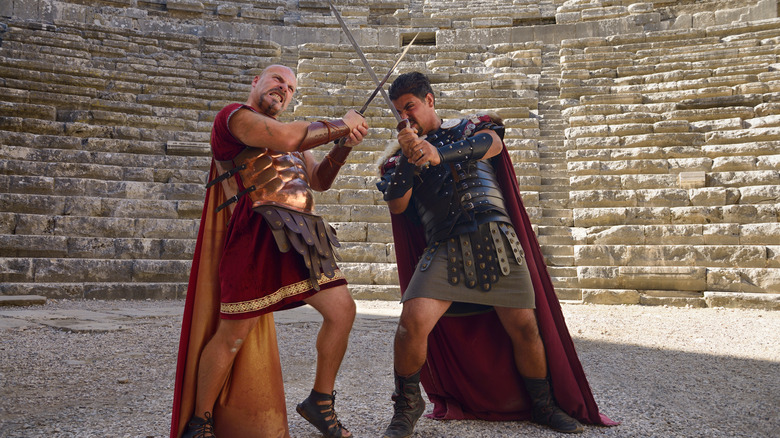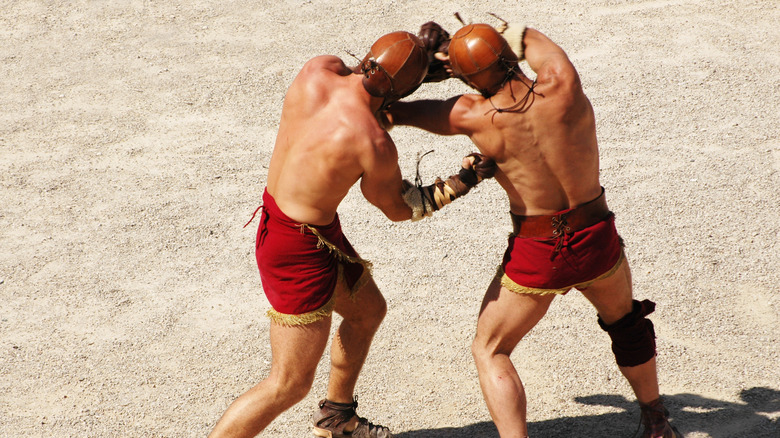The Dark Side Of Gladiator Culture
Professional sports are a multibillion dollar global industry today, with the world's most famous athletes known by a majority of the human race. However, our taste for athletics is not as unanimously zealous as the ancient Romans. Once a luxury only available to the wealthy elite, Emperor Nero opened gymnasiums and arenas to the public, so thousands could indulge in wrestling contests, chariot races, and gladiator fights (via History Daily). The Circus Maximus, the largest stadium in Rome, rivals the largest in the world today, and superstar charioteer Gaius Appuleius Diocles accrued the equivalent of $15 billion in prize money over his career, well beyond any modern athlete will likely reach.
Life was not always filled with such riches, particularly for the Roman gladiators, who practiced violent hand-to-hand combat for entertainment. They were typically (though not always) slaves or prisoners of war and were expected to die honorably in front of tens of thousands of cheering fans. While combat sports still exist today, the idea of packed arenas watching slaves fight until death or serious injury is quite macabre by today's standards, and the sport's origins are even darker.
Gladiator fights came from bloody funeral rites
According to History, Rome's most popular sport began as a funeral tradition. When a wealthy noble perished, their families arranged fights to the death between slaves or prisoners on the departed's grave, as a testament to the values the aristocrat had in life. It's also quite possible that the fights were a workaround for human sacrifice, as Romans believed blood would purify the deceased's soul. Julius Caesar raised the stakes at the funerals of his father and daughter by having hundreds of slaves duke it out in their honor, which proved to be hugely popular.
While not every fight was strictly to the death — gladiators were expensive to train and feed — the life expectancy for these warrior-athletes rarely extended beyond their mid-20s. Historians estimate that 10-20% of all gladiator fights ended with a fatality, usually at the request of the crowd, who often determined if a defeated warrior lived or died. This doesn't include the thousands of animals slain at the hands of the "bestiarii," animal-fighting specialist gladiators who fought against crocodiles, ostriches, lions, and elephants. Violence and sport are still closely entwined today, but our standards for entertainment have definitely changed.

